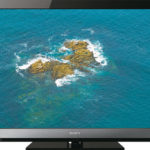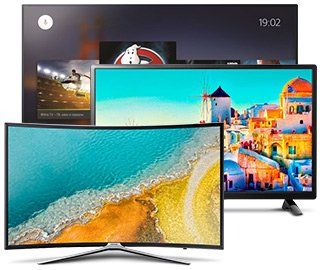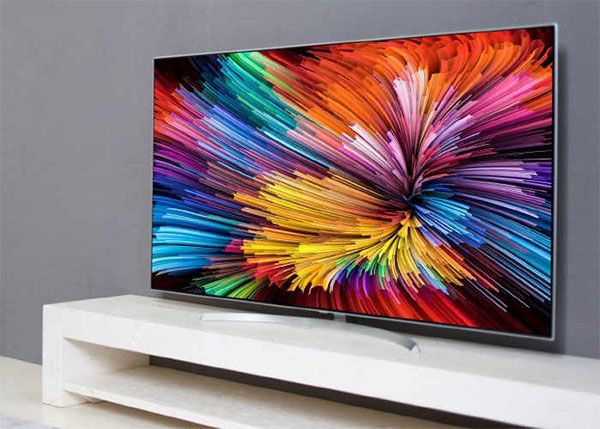Progressive scan: what is it on TV
When buying a new modern TV, the problem of choosing a new model often arises. When looking through the characteristics of digital technology, you can often come across the concept of progressive scan in the list. It has different standards. The question arises, what is it and which option is best to choose?
The content of the article
Progressive scan or progressive scanning: what is it in TV
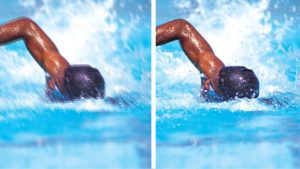 What is progressive scan on TV? Progressive scan is a special digital imaging system that is displayed on a TV screen. The image is transmitted by forming lines one by one, thereby improving the quality of the transmitted image.
What is progressive scan on TV? Progressive scan is a special digital imaging system that is displayed on a TV screen. The image is transmitted by forming lines one by one, thereby improving the quality of the transmitted image.
This type of picture transmission differs from the classic interlace system. In addition, progressive scanning is capable of transmitting up to 50 frames per second. Thus, progressive scanning ensures the transmission of high-quality images. Due to this, it is possible to avoid the comb effect.
Progressive scanning has long gained great popularity in the telecommunications market and is widely used in the production of various models of televisions.
Why is it needed on TV?
 There are two types of scanning - interlaced and progressive.In the first option, the picture appears on TV in two “half-frames”. Odd rows are displayed first, followed by even rows. This type of system was present in older versions of televisions. The image was clear, but not so saturated. The interlace system is indicated in the characteristics with the index “i”.
There are two types of scanning - interlaced and progressive.In the first option, the picture appears on TV in two “half-frames”. Odd rows are displayed first, followed by even rows. This type of system was present in older versions of televisions. The image was clear, but not so saturated. The interlace system is indicated in the characteristics with the index “i”.
The progressive scanning system displays the entire frame on the screen. All lines run sequentially. This helps to convey a clear, three-dimensional and realistic image. When watching TV channels, your eyes do not strain, there is no discomfort or fatigue.
The quality of the transmitted episode determines the number of transmitted moments per second. Sometimes indicators are indicated in Hertz. Today you can find different options for transmitting frames from 60 Hz or more.
Advantages of Progressive Scan
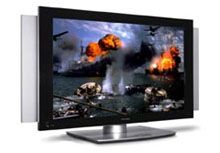 The new improved system has a number of advantages that make it better than others. The main advantages include:
The new improved system has a number of advantages that make it better than others. The main advantages include:
- No visual image distortion.
- Does not require video smoothing.
- Can be scaled to the maximum allowed resolution.
- High image clarity.
- It is not split into two fields, so the image is transmitted as a whole.
Remember! This system does not tire your eyes and makes watching TV channels pleasant and relaxing.
Digital TV Decomposition Standards
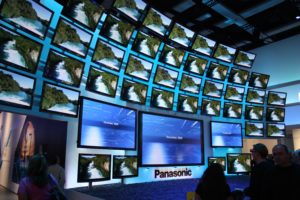 What is progressive scan on TV? The decomposition standard, or as it is also called the scan format, is a characteristic of the television broadcasting standard, which determines the number of lines transmitted to the TV screen.
What is progressive scan on TV? The decomposition standard, or as it is also called the scan format, is a characteristic of the television broadcasting standard, which determines the number of lines transmitted to the TV screen.
Television scanning is used in both televisions and computer monitors.The clarity of image transmission on the screen depends on the standard of digital television resolution.
Digital TV resolution standards according to European parameters include 625/50, and according to American parameters 525/60. In the first version, the picture is displayed on the screen in 625 lines in two half-frames. Their frequency is 50 Hz. In the American version, it is displayed using 525 lines with a frequency of 60 Hz per second.
Decomposition standards were still formed during the time of cathode ray tubes. Therefore, they left their mark in older models of technology. They have a damping area, which is why their number in each variant can vary significantly.
Some lines are generated horizontally, some vertically. This allows you to display the full number of periods in the episode. According to the European standard, out of a possible 625 transmitted lines, only 576 remain operational. Therefore, on new modern computers you can see the 576i extension standard.
New LCD TV options are distinguished by image quality and color brightness. They help you enjoy watching television without harm to your health. Progressive scan helps improve the image and smooth out the picture, making it smoother and clearer.

